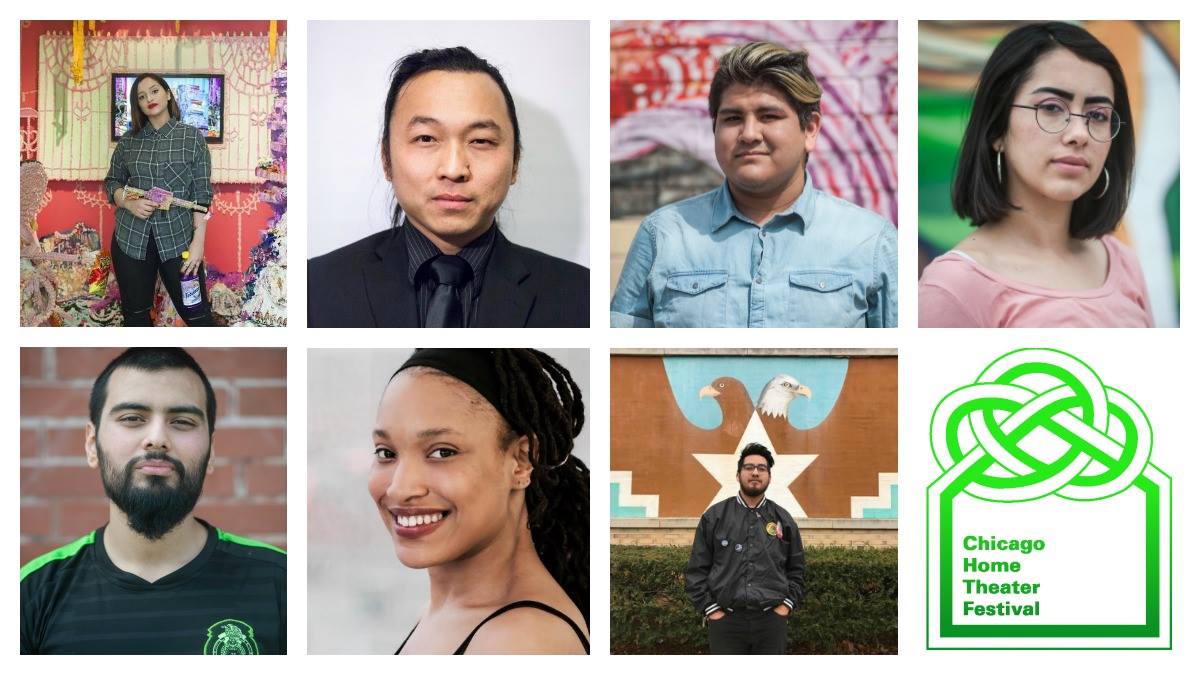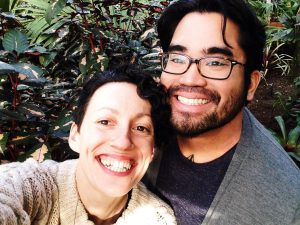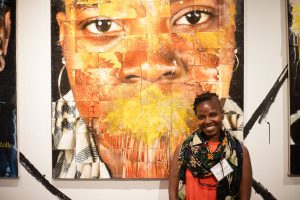This interview is a collaboration between Sixty and Chicago Home Theater Festival, a festival that invites strangers into each other’s homes to share a communal meal, experience transformative art, and build intentional community across lines of difference. CHTF centers the leadership of women and femmes, artists of color, immigrants and refugees, LGBTQ folks, and artists with disabilities whose creative practice disrupts injustice and paves cultural safe passages across our hyper-segregated city.
Festival host Giau Minh Truong is a storyteller, teaching artist, performer, and quail-keeper based in Albany Park. He’s hosting a festival night on May 26th with the lineup curated by artistic producers William Camargo and Yvette Mayorga. Writer and artist Haydée Souffrant spoke to him about his work, the ebb and flow of Albany Park, and the essence of building community through the arts.
Haydée Souffrant: What neighborhood do you live in, and how long have you been living there?
Giau Minh Truong: Albany Park, off Kedzie and Lawrence, for almost six years now.
HS: How did you come to live in Albany Park?
GMT: Well, after living in a few different areas here in Chicago, I came to Albany Park partly because of how diverse the neighborhood is – made up of immigrants and mixed families.
HS: What are some of the changes that have come up in Albany Park? What’s stayed the same?
GMT: I feel like Albany Park and its diversity has stayed the same, which I love, because you can go down Kedzie Street to get anything from Vietnamese to Korean food, Middle Eastern to Brazilian food. You can hear all sorts of languages and [see] cultures here where you have folks with different mindsets about diversity come together. There’s some violence here and there that happens in any neighborhood, but none of that changes the way people in Albany Park work together to build a cohesive community – like the Albany Park World Festival during the summertime around August. While I haven’t seen “changes” so to speak, I would love to see more things happening here in Albany Park, especially cultural events. That’s why I love that the Chicago Home Theater Festival is coming here.
HS: That festival sounds amazing!
GMT: It is. It’ll be its third year, and we’ve had performers like Mexican dance troupes along with arts organizations, food, cultural music, and more. It’s a mixed bag here like everywhere else in Chicago because it presents the world. It draws back to how Albany Park can be an example of how the world can work together.
HS: Was there a time that you felt at home, or realized that Albany Park was home?
GMT: Well, I’m a dog lover, and I think for me, the time I felt at home was when I had Molly, my dog who’s blind. Walking through the neighborhood with her as a puppy, people would freak out about her because her behavior was different from normal dogs; she was sensing her way through the space. It was always a great opportunity to have conversations with my neighbors and strangers. Not just about her – I think if I had been walking alone, I wouldn’t have [had those conversations]. There was a vulnerability in myself and my dog, telling her and our story. That was when I sensed that this neighborhood was home.
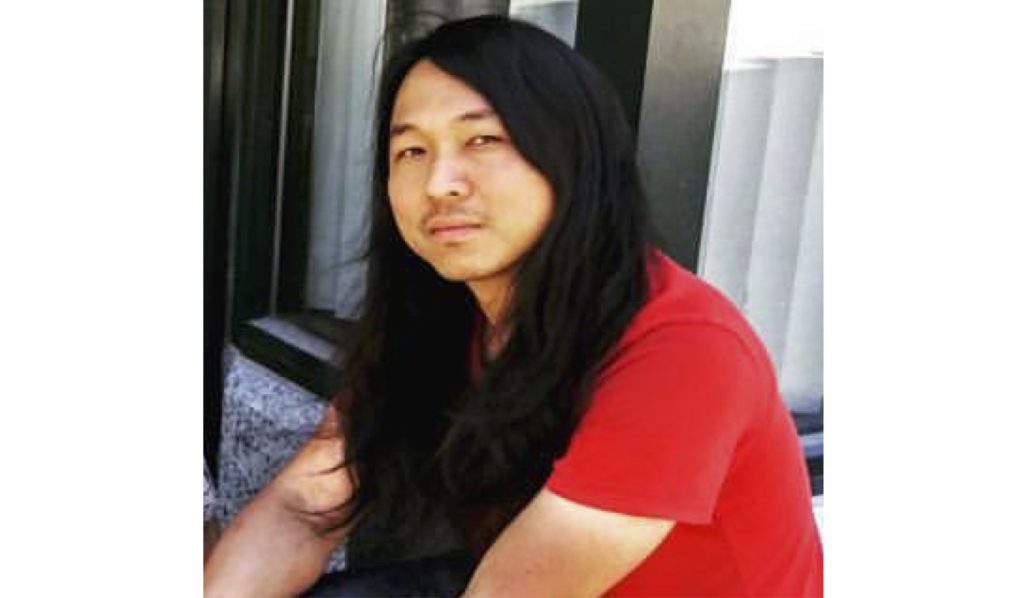
HS: That’s a beautiful intersection of how storytelling can connect people. Who knew little Molly was bringing everyone together?!
GMT: (Laughs)
HS: How do you feel when people ask you where you’re from? PS, I hate that question. It’s so weird.
GMT: (Laughs) It’s a back and forth for me with that question, because I do feel that every time I’m asked that question, I’m an outsider in their eyes. At the same time, I know that people are curious about each other and our histories, and that’s important. I’m very proud of where I come from – I come from Vietnam, so when people ask me that question, I say, “I grew up in Chicago all my life, but I was born in Vietnam.” When I turn this question around to people, it’s a chance for people to share their family history, where they’re from as immigrants. I’ve been more embracive of that question as a fair-playing feel.
HS: In turning that question around, I’m wondering if there’s ever a better way to ask that. Is there an ideal way to ask that question?
GMT: That’s a good question. I’m sure there is one. Wow, yeah… that is a really good question.
HS: It’s food for thought, right?! Even I‘m wondering how to ask that – like, “How did you get here, to Chicago?”
GMT: Yeah. Because roots are always important, and that might be the question: “What are your roots? Where are they?” When I worked with Storycatchers, in West Pullman, we had a program where we brought kids from rival gangs together to do conflict resolution. By teaching them who I was, and about my Vietnamese roots, one of my students was so excited to introduce me to her mom and talk about the world.
HS: I love that. Since you’ve worked and lived in a few neighborhoods, what do you think people assume about Albany Park?
GMT: People are afraid of Albany Park for some strange reason. Every time I say I’m from Albany Park the reaction is, “Ohhh.” And I think Albany Park in the early 2000’s may have had its issues. I’ve had friends with families leave during its more rough period with crime, and while they left during that flight, they always wished they stayed. To build the community. Both ideas –of wanting to protect your family and wanting to uplift your neighborhood – are real. And since I’m also expecting…
HS: Oh my gosh! Congrats!
GMT: (Chuckles) Thank you! So, as someone expecting, there’s a balance in how to be part of your community and help it grow and thinking about your family needs. I know I want to build a better one here in Albany Park. You know, build something better for all of us. And this goes back to my quail project.
HS: Wait, you raise quails? (eyebrow raise)
GMT: (Laughs) I do! I build quail habitats to learn about behavior changes in environments.
HS: Explain. (laughs)
GMT: It was based on a research paper I read where when female quails are in an environment that is dangerous or lacking in resources, they will inject a little more testosterone into the eggs. When the chicks hatch, they’re born a bit more “flighty” and slightly more aggressive for survival. But if they feel safer and have more access to food, then more estrogen is released to the eggs, and those chicks are friendlier. So after a few generations – quails don’t live very long – they started to get more friendly and socialize.
HS: Man. Nature is incredible. But what a great way to connect history, generational trauma, and community. Who knew quails were so interesting?!
GMT: (Laughter)
HS: Okay. So, quails aside, is there anything you want people to know about Albany Park?
GMT: Hmmm… I think that people should know that there is such a rich history here in Albany Park. And a lot of organizations that do work here around storytelling and advocacy. There are lots of ways to witness art that can help you change your perspective of people. A great one is Albany Park Theater.
HS: What’s a person or place that is quintessential and/or fundamental to this community?
GMT: Taco Chino and Nam Ga Bah are great food places to eat at when you come. Halcyon Theater by Spaulding and Wilson, which works with an open church, is amazing. And the river – I don’t think people know that there’s a river here in Albany that’s beautiful and can be recreational.
Featured image: The line up of artists for the Albany Park night of Chicago Home Theater Festival on May 26th, hosted by Giau Minh Truong, produced by William Camargo and Yvette Mayorga; featuring Albany Park Theater Project, José Chicle Córcoless, Sebastian Olayo, Mimi Rosales and Kia Smith. (Image courtesy of Chicago Home Theater Festival)
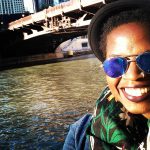 Haydée Souffrant is a Chicago-based multimedia artist crafting work through storytelling, lyrical text, movement and visual/performance art to document the legacies of trauma one inherits throughout cultural, familial, and societal generations. Bridging together narratives of mental health + wellness within black and brown communities, Haydée’s work seeks to stimulate conversations on how do communities maintain survival in sharing stories of struggle and resistance alongside alternative healing practices. Studying West African dance forms with the Dance Diaspora Dance Theater Ensemble of Oberlin College, Haydée’s literary and visual work has been featured in numerous online literary publications, Oberlin College, The Whitney Museum, Links Hall and other venues in and around Chicagoland. Haydée is a graduate of Oberlin College, and a MFA candidate in the Interdisciplinary Arts + Media program at Columbia College Chicago with her work focusing on the intersections of storytelling, mental health, legacies of trauma + healing across communities of color. Also a Reiki practitioner and founder of The Rooted Turtle Healing, as you can tell, she loves turtles and writing things.
Haydée Souffrant is a Chicago-based multimedia artist crafting work through storytelling, lyrical text, movement and visual/performance art to document the legacies of trauma one inherits throughout cultural, familial, and societal generations. Bridging together narratives of mental health + wellness within black and brown communities, Haydée’s work seeks to stimulate conversations on how do communities maintain survival in sharing stories of struggle and resistance alongside alternative healing practices. Studying West African dance forms with the Dance Diaspora Dance Theater Ensemble of Oberlin College, Haydée’s literary and visual work has been featured in numerous online literary publications, Oberlin College, The Whitney Museum, Links Hall and other venues in and around Chicagoland. Haydée is a graduate of Oberlin College, and a MFA candidate in the Interdisciplinary Arts + Media program at Columbia College Chicago with her work focusing on the intersections of storytelling, mental health, legacies of trauma + healing across communities of color. Also a Reiki practitioner and founder of The Rooted Turtle Healing, as you can tell, she loves turtles and writing things.
